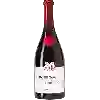
Winery Boissy DelaygueCoteaux des Baronnies Rosé
This wine generally goes well with
Details and technical informations about Winery Boissy Delaygue's Coteaux des Baronnies Rosé.
Discover the grape variety: Gaillard 157
Interspecific crossing carried out in 1891 by Fernand Gaillard (1821-1905) between (triumph x eumelan) and 1 Seibel. This direct-producing hybrid was multiplied in particular in the south-west and centre-west of France as well as in the departments of the Rhône valley and the Ain.
Informations about the Winery Boissy Delaygue
The Winery Boissy Delaygue is one of wineries to follow in Coteaux Bourguignons.. It offers 25 wines for sale in the of Coteaux Bourguignons to come and discover on site or to buy online.
The wine region of Coteaux Bourguignons
Coteaux Bourguignons is a wine appellation whose wines are produced in the Vineyards of Burgundy, in the east of France and more precisely in the wine regions of Chablis, Côte de nuits, Côte de Beaune, Côte Chalonnaise and Mâcon. The Coteaux Bourguignons can also exist under the following designations: "Coteaux Bourguignons", "Bourgogne grand ordinaire" or "Bourgogne ordinaire". Its vineyard benefits from a temperate-oceanic and semi-continental Climate and a Terroir made of clay-limestone soil. The Coteaux Bourguignons has the French AOC (Appellation d'Origine Contrôlée) label as well as the European AOP (Appellation d'Origine Protégée) label.
The wine region of Burgundy
Bourgogne is the catch-all regional appellation title of the Burgundy wine region in eastern France ("Bourgogne" is the French name for Burgundy). Burgundy has a Complex and comprehensive appellation system; counting Premier Cru and Grand Cru titles, the region has over 700 appellation titles for its wines. Thus, Burgundy wines often come from one Vineyard (or several separate vineyards) without an appellation title specific to the region, Village or even vineyard. A standard Burgundy wine may be made from grapes grown in one or more of Burgundy's 300 communes.
The word of the wine: Soft
Sweet wine containing between 30 and 50 grams of residual sugar. A sweet wine is made from very ripe grapes but without being affected by botrytis cinerea and without being raisined. This term can also be applied to a dry wine that is smooth and fat in the mouth.













